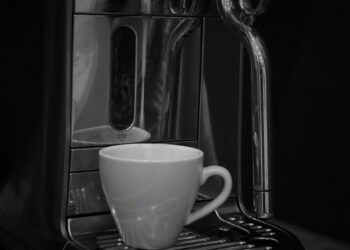Discovering the Delights of Coffee: A Beginner’s Guide to Brewing Bliss
Embarking on the journey toward coffee mastery can be as exhilarating as it is daunting. Coffee, a beloved global beverage, boasts a heritage rich in variety, technique, and personal preference. This guide aims to demystify the process and offer clear, actionable insights to enhance your coffee experience.
Understanding Coffee Origins and Types
Before diving into brewing methods, it’s important to understand where coffee comes from and the different types available. Coffee beans are the seeds of the Coffea plant, primarily sourced from Latin America, Africa, and Asia. The environment in which these beans are grown has a significant impact on taste and quality. Broadly, coffee types can be classified into two categories: Arabica and Robusta. Arabica beans are widely appreciated for their smooth, complex flavor profiles, while Robusta beans are more robust and caffeinated.
Choosing the Right Coffee Beans
Selecting the right coffee beans is crucial for brewing a perfect cup. Freshness is key — look for beans that were roasted within the past two weeks. Local roasters or specialty coffee shops often offer a variety of fresh beans and can provide insights into the flavor profiles of different blends. Experiment with several types to understand your preferences.
Essential Coffee Brewing Equipment
Your choice of equipment will significantly influence the taste and quality of your coffee. Essential items include:
- Coffee Grinder: A good quality grinder will ensure uniformity in size, critical for extraction and flavor.
- Brewing Device: Popular options include the French Press, AeroPress, Drip Coffee Maker, and Espresso Machine.
- Scale: Precision in coffee brewing is key, making a scale an indispensable tool for measuring coffee grounds and water.
- Filtered Water: Coffee is over 98% water, so the quality of the water used is integral to the taste of the brew.
Mastering Coffee Brewing Techniques
Each brewing method brings out a different aspect of coffee, highlighting unique flavors and aromas:
- French Press: Known for its rich and full-bodied flavor, the French Press is use-friendly and versatile.
- AeroPress: Ideal for coffee lovers on the go, this method delivers a smooth, strong taste in minutes.
- Drip Coffee: The most traditional method that’s both convenient and consistent, suitable for daily use.
- Espresso: This method requires more precision and equipment but is indispensable for crafting drinks like lattes and cappuccinos.
Optimizing Brewing Parameters
To enhance your coffee experience, consider these key brewing parameters:
- Grind Size: Varies with the method; typically, finer grinds for espresso and coarser grinds for French Press.
- Water Temperature: Generally, water should be just off the boil (about 195°F to 205°F), which is optimal for extraction.
- Brew Time: Depends on the method; longer brews can extract more flavors, but there’s a delicate balance to prevent bitterness.
Exploring Coffee Flavors and Aromas
Coffee’s flavor profile can range from fruity and light to dark and full-bodied. Various regions contribute their unique notes:
- Latin America: Known for balanced and fruity coffees.
- Africa: Expects vibrant, wine-like flavors with floral notes.
- Asia: Typically richer and earthier.
When tasting coffee, pay attention to the body (texture), acidity (brightness), and overall flavor. Over time, you’ll start noticing subtle differences and develop personal favorites.
FAQs in Coffee Brewing for Beginners
What is the best coffee grinder for beginners?
A burr grinder is recommended over a blade grinder, as it provides more control and consistency in grind size, essential for quality brewing.
How much coffee do I use per cup?
A general guideline is to use about 1 to 2 tablespoons of coffee per 6 ounces of water, but feel free to adjust according to taste.
Can I reuse coffee grounds?
While you can technically reuse coffee grounds, it’s not recommended as most of the flavors and oils are extracted during the first brew, leading to a weak and flat second cup.
How do I store coffee beans?
Keep beans in an airtight container in a cool, dark place. Avoid the fridge or freezer, as moisture can impact the beans’ flavor.
Conclusion
Entering the world of coffee brewing can open up a variety of tastes and experiences. With the right tools, beans, and knowledge, you’re well on your way to brewing bliss. Remember that like any culinary art, coffee brewing is personal and subjective. Experiment with different beans, equipment, and parameters to find your perfect cup. Enjoy the journey toward becoming a coffee connoisseur!





